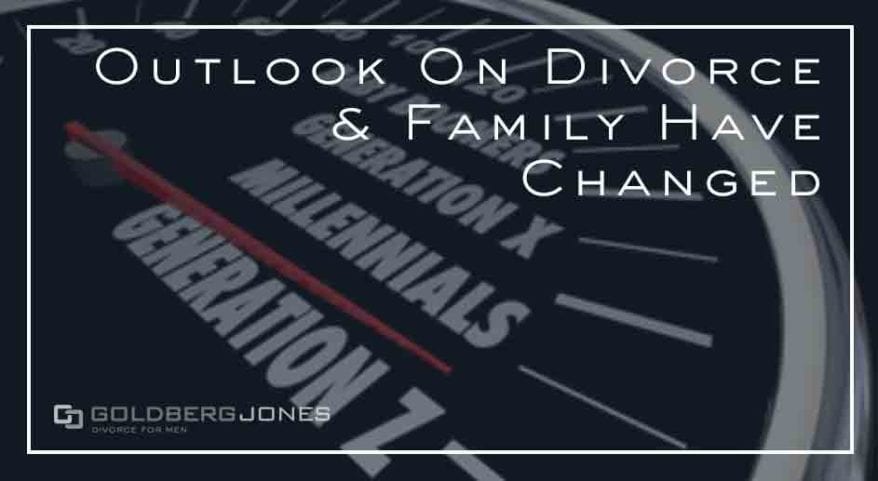Marriage may be an institution, but it’s not immune to change. What marriage is, what it means, how important it is; all of this and more have transformed dramatically over time. Some shifts are massive and easily recognizable. Others are subtle, changing across many years, so gradual you hardly notice them at first glance.
A recent study looks back at the trends and tendencies in marriage and divorce over the past five decades to examine this evolution. Digging into the patterns and changing attitudes towards marriage, divorce, family, happiness, and more, the findings paint an interesting portrait of the state of marriage in contemporary culture.
Less Likely To Marry
Perhaps the biggest shift in recent years is that Americans, as a whole, have become increasingly less likely to marry. From 1970 to 2010, the marriage rate among single women decreased by half.
As time goes on, more and more people simply choose not to follow the traditional path of marrying young and living that lifestyle. And if they do marry, couples tend to push marriage off until later.
Delaying Marriage
One factor that impacts the number of non-married people is that many are put off marriage until much later in life. In 1960, the median age for a woman to get married was just 20.3-years-old, while it was 22.8 for men.
Though people still wed at an early age sometimes, marriage at these ages now seem very young. By the time 2011 rolled around, those numbers had increased to 26.5 and 28.7 years, respectively, which represents a monumental shift.
Increase In Unmarried Cohabitation
Another factor that influences these statistics is the upward swing in unmarried cohabitation. It’s not that couples aren’t living together in a romantic, familial sense. They very much still are, but they’re not necessarily getting married before they move in.
Where this would have once been almost unthinkable from a social perspective, it’s incredibly common now. In fact, more than 60% of modern marriages are preceded by the couple living together. Some look at this as a kind of trial marriage or test run.
In theory, it may clarify whether or not a relationship is a good idea, whether two people are indeed a match, or even head off bad marriages before they become official. There is, however, quite a bit of debate on the subject. Some evidence indicates that couples who live together prior to marriage are actually more likely to divorce down the road.
Other Reading: Preparing For Your Child Custody Case
Decrease In Second Marriages
As people have pushed marriage back and become less likely to marry at all, there has also been a slight decline in second marriages.
Along with a divorce rate estimated to be between 40 and 50%—twice what it was in the 1960s, but lower than its peak in the 1980s—and the tendency to wait longer to get hitched, there has been a sharp increase in the number of adults who are currently divorced.
Divorced men are more likely to walk down the aisle again than divorced women. However, even amongst those who do subsequently remarry, many will live with a romantic partner before tying the knot again.
Other Reading: The Date of Separation in California
Less Child Focused
Historically, marriage was primarily about raising children and unions revolved around these concerns. This, too, has changed over the years. In 1960, more than half of households had children. By 2011, that number was all the way down to 32%.
More people are opting not to have children or delaying this as well. This changes the focus of marriage and family and how many people define and approach these endeavors.
There has also been a significant impact on the makeup of the average American household, and there is less emphasis than ever on the stability of staying together for the kids. Whereas before, a couple may have remained in an unhappy marriage to benefit the children, that is not necessarily the predominant way of thinking.
Related Reading: Types of Child Custody
Single-Parent Families
Following along these lines, there has also been a marked increase in the number of single-parent families.
In 1960, only 9% of children lived single parent homes. By 2011, that number rose to 26%. This may be partially attributable to the simultaneous rise in divorce, births outside of marriage, and unmarried cohabitation.
Changing Teen Attitudes About Marriage
Over the decades, the attitudes of young people towards family and marriage have also evolved. Though the desire to have a good family life has remained high across the board, a sense of pessimism has crept in. For an increasing number of people, the institution of marriage has become a bit suspect, and they no longer view it as the key to a happy, fulfilling life it once was.
Additionally, younger people, especially teenagers, have become more accepting of less traditional, nonmarital lifestyles, Like unmarried cohabitation or raising children without being married. Where there were limited options a few generations ago, now there are a variety of possibilities that are all equally viable.
Moving forward, the younger generation’s outlook on family, divorce, and marriage will continue to have a huge impact on the shifting cultural landscape.
Looking back over the last few decades, it’s clear to see that attitudes and approaches towards marriage, family, and divorce have changed dramatically. What is commonplace now, may have been almost unthinkable a few generations ago.
One thing remains certain, that society’s stance on these topics will continue to shift and change to reflect its surroundings.
We don’t know how this evolution will manifest—we could see marriage rates continue to decline, there could be a counter push to return to more traditional ways, or other developments we haven’t even conceived of yet may come to pass.
However it plays out, it will be equally fascinating to watch in the future.
Related Reading: How Video Games Impact Marriage and Divorce
